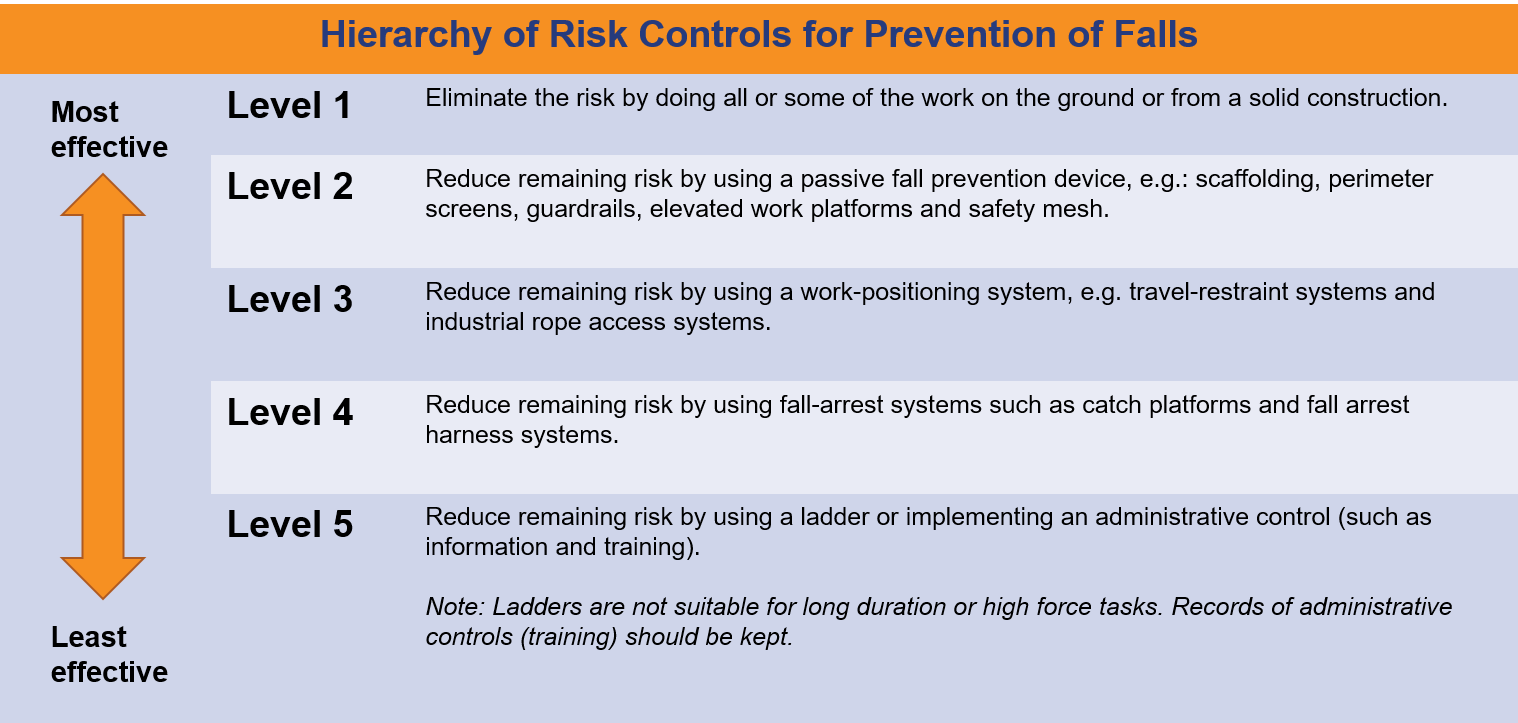- Membership Portal
-
My Safety Essentials
-
3. Frame stage
-
3.2 Working from heights
3.2 Working from heights
Risks of working from heights
Working from heights has a legacy associated with accidents resulting in serious injury or even death.
Fall incidents have often been associated with:
- Working on or near unprotected edges;
- Using unsafe, modified or incomplete scaffolds;
- Using inappropriate ladders or unsafe ladder use;
- Working on roofs or with skylights;
- Working on trucks or plant;
- Working in proximity to stair-voids;
- Working around holes, pits or shafts.
It is Master Builders Victoria's view that, with almost no exceptions, work at heights should never be undertaken without both perimeter (edge) and internal (void) protection in place.
The notable exception is the erection of roof trusses, which was discussed in detail in topic 3.1.2.
What is your responsibility?

As an employer, you are responsible for providing and maintaining, so far as is reasonably practicable, a working environment that is safe and without risk to the health of your employees and contractors. Therefore, so far as is reasonably practicable you must try and eliminate the risk of falls.
If it is not reasonably practicable to eliminate the risk, the risk must be reduced, so far as is reasonably practicable. Refer to the hierarchy of risk control for prevention of falls above.
Whilst employers (including self-employed persons) are required to control the risk of falls before commencing work, construction work involving a risk of a fall from more than two metres is identified as ‘high-risk construction work’ (HRCW) and further specific duties apply.
These specific duties include a requirement that work must not commence unless a Safe Work Method Statement (SWMS) has been developed.
The SWMS must:
- Identify work that is HRCW;
- State the hazards and risks to health or safety of that work;
- Sufficiently describe measures to control those risks;
- Describe the manner in which the risk control measures are to be implemented.
The SWMS must be followed during the work. If it is not being followed the work must stop.
It is also a requirement that after roof trusses have been erected, no further work on roofs should occur until perimeter and internal fall protection is in place. This would typically involve the erection of perimeter edge protection, the erection of a scaffold, the installation of a hanging bracket system with handrail and working planks, and scaffolding or internal void protection with a safe means of access and egress.
Key legislation:
- Section 21, Occupational Health and Safety Act 2004 (Vic)
- Section 26, Occupational Health and Safety Act 2004 (Vic)
- Part 3.5, r.43, Occupational Health and Safety Regulations 2017 (Vic)
- Part 3.5, r.44, Occupational Health and Safety Regulations 2017 (Vic)
- Part 3.5, r.45, Occupational Health and Safety Regulations 2017 (Vic)
- Part 3.5, r.46, Occupational Health and Safety Regulations 2017 (Vic)
- Part 5.1, r.327 Occupational Health and Safety Regulations 2017 (Vic)
- Part 5.1, r.328 Occupational Health and Safety Regulations 2017 (Vic)

Ask us Anything...
Topics
- 3.1Framing work
- 3.1.1Framing the first level
- 3.1.2Roof framing
- 3.2
Working from heights
- 3.3Scaffolding
- 3.4Powerlines and electrical hazards
- 3.5Working with vehicle loading cranes
- Compliance code - Prevention of falls in general construction
- Compliance code - Prevention of falls in housing construction
- PREVENTING FALLS IN HOUSING CONSTRUCTION - Code of practice
- A guide to falls prevention
- Prevention of falls in construction - Selection and safe use of portable ladders
- Working safely when installing photovoltaic (PV) systems












 Previous
Previous
